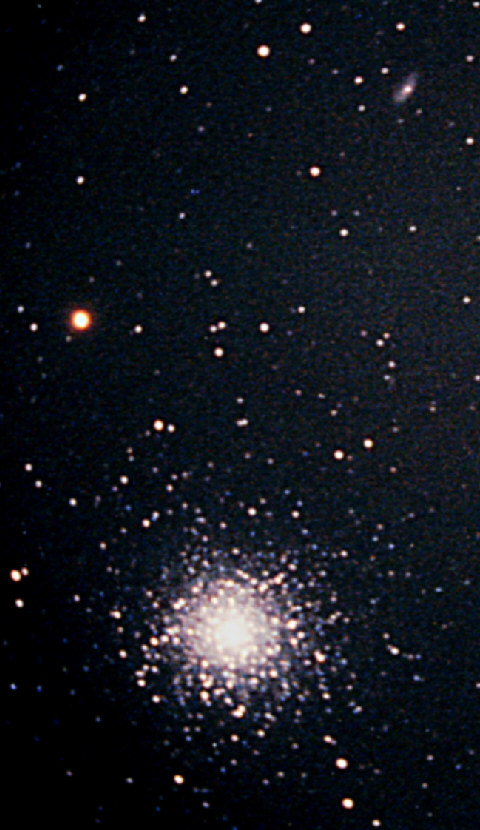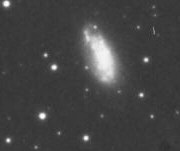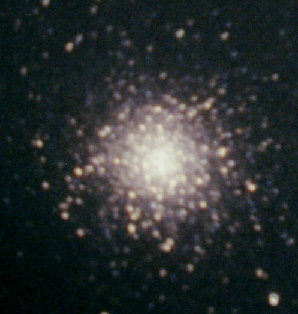
Globular cluster M 13 in Hercules (cropped picture)
Date: 17 May 1998, 1.20h CEST
Lens: C9 with focal reducer (f=1480 mm f/6.3)
Guiding: C5 at 278x
Exposure time: 30 minutes
Film: Kodak Select Royal Gold 400
During the exposure some dew precipitated on the correction plate. Nevertheless the differences in star colours are plainly visible. Red giant stars cluster in the center of globular cluster whereas blue stars are located mainly in the outskirts.
Near M13 is the 11.6 mag bright spiral galaxy NGC6207 (in the top right corner). The length along the longer axis is 2.9'. Below is a picture of NGC6207 taken from the POSS which is rotated about 70° compared to my picture. The very bright core of this galaxy is overexposed on the POSS picture. At the beginning of 2004 a supernova lighted up in NGC6207. See my CCTV images here

The tiny fuzzy and a little bit elongated (in my picture nearly vertical) speck beside a faint star, vertical under NGC6207 and about the
width of a thumb away from the right edge, is the spiral galaxy IC4617. This galaxy shines from a distance of 500 million lightyears with a brightness of 14.2 mag.

Meanwhile I took an image of IC4617 with my CCTV camera. The star next to IC4617 on the image above is the faint star that I mentioned in the text above.

The negative sports a much wider dynamic range than the print. A darker print of M13 shows even stars in the center of M13 (left).

The picture to the left was obtained by stacking a darker and a brighter print. One problem with stacking of several prints of the same negative is the slightly different magnification which result in blurred star images or even "double stars" at the edges although I tried to compensate the magnification difference by re-scaling the picture with my image processing program. Up to now I found no satisfying solution for this problem.
Nevertheless the composite shows much more details in the core of M13 but on the other hand NGC6207 remains in the dark.